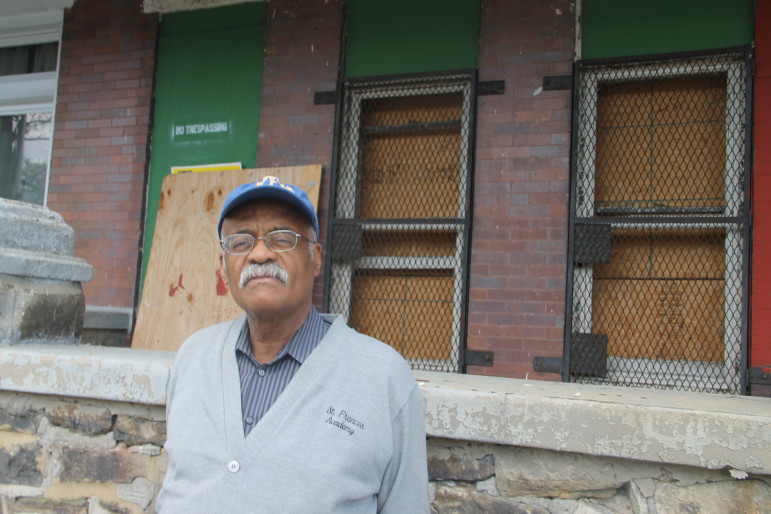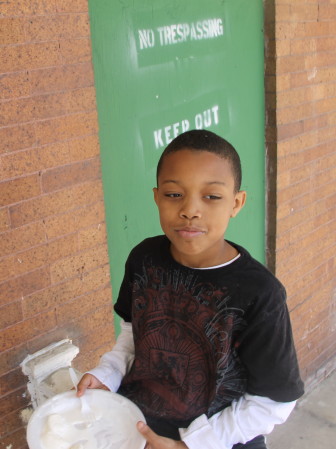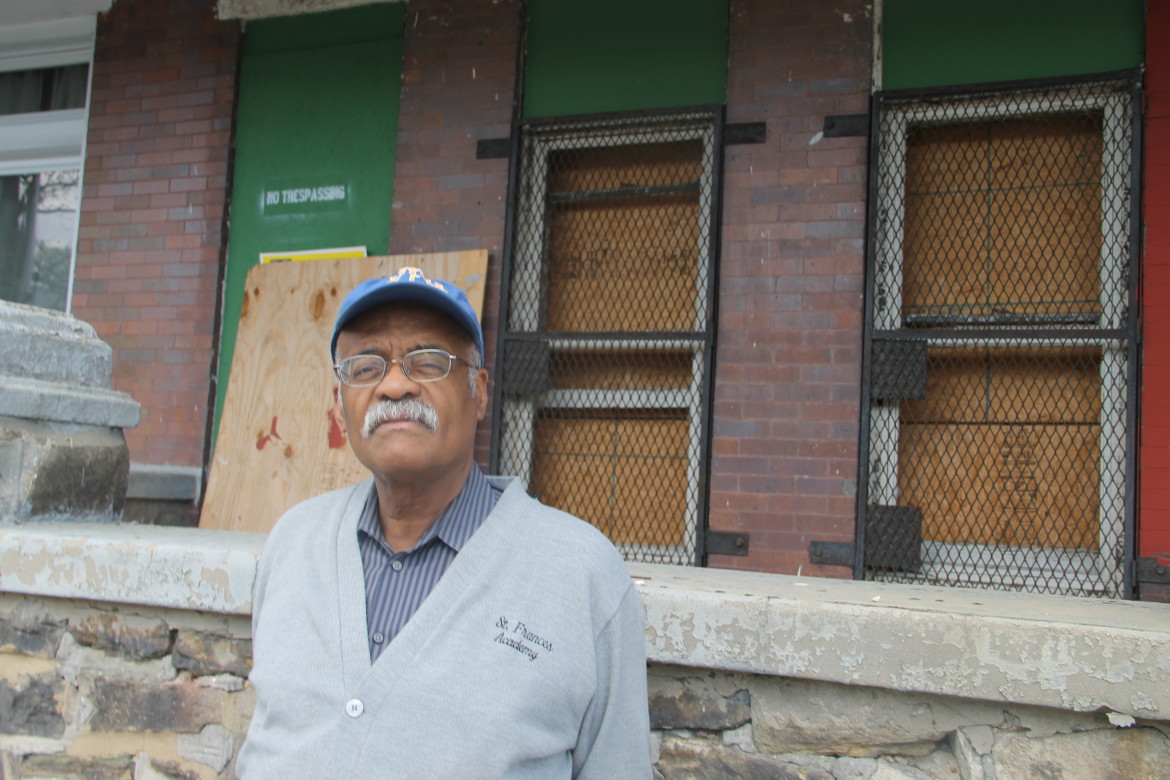 BALTIMORE — On the night Ralph Moore Jr.’s hometown burned, his mind flashed back to 1968.
BALTIMORE — On the night Ralph Moore Jr.’s hometown burned, his mind flashed back to 1968.
The assassination of Martin Luther King Jr. The race riots. The legacy of huge burned-out and largely abandoned swaths of this city that have never recovered.
Moore is a towering presence among community activists, equally comfortable being hugged by President Barack Obama and engaging mayors, governors and members of Congress in debate. He’s worked alongside (and sometimes against) police and gang members alike.
On Monday night, he said a prayer for his beloved Baltimore amid the blazes and looting and youths hurling rocks at city police and Maryland State Police in riot gear.
In his day job, Moore, 62, serves as program manager for Restoration Gardens, a sparkling, $6 million transitional housing complex for recently homeless youths, a few blocks from the site of rioting at Mondawmin Mall in west Baltimore.
For decades now, Moore has devoted many of his waking hours and much of his passion to kids in this city, where he says one in three children live beneath the official federal poverty line ($23,850 per year for a family of four).
He's a tall glass of water with a balding dome and a frost-colored mustache. He has been a teacher, a counselor, a mentor and is a man with a mission: to do everything possible to spare children from what can be the maw of inner-city Baltimore.
On a small blackboard in his office, the words “Young Lives Matter” are written in white chalk. He quotes Martin Luther King Jr. and Gandhi, Malcolm X, Mother Theresa and Nelson Mandela. And he has a dream today: that summer “peace camps” (funded largely by Jesuits and foundations like the Baltimore-based Abell Foundation) that teach nonviolence to young kids will spread beyond their two locations in the city.
What his city desperately needs now, Moore says, is not name-calling. To his chagrin, Baltimore Mayor Stephanie Rawlings-Blake and President Obama labeled rioters and protesters “thugs” (though the mayor later backpedaled on that description). What the city needs now, he says, is hope borne of opportunity, so elusive to so many.

Gary Gately
Moore says he's disheartened by the rioting that occurred blocks from these boarded-up row houses.
That takes Moore back to the 1968 riots and his prayer that this time the city will learn from past mistakes and rebound. He recalls passing National Guardsmen and militarized vehicles beneath whirring helicopters as he took three buses to high school in 1968.
In the wee hours of Tuesday morning the presence of the guardsmen — 2,000 are in the city now — recalled those ugly days long since past, but whose ravages and wounds remain in the psyche of generations of a city.
To begin to heal them will require a radical shift in priorities, Moore says. It’s time for the developers of glitzy, largely publicly financed downtown projects to step up, pay up and help provide jobs to locals, invest in community resources like recreation centers and public swimming pools, and revive a largely broken city school system.
But perhaps most of all, Ralph Moore says, it’s long past time to end the war on drugs.
“It’s not a war on drugs. It’s a war on the poor that they call the war on drugs,” he said.
“We got the highest incarceration rate in the world because Richard Nixon declared in 1971 a war on drugs and since that time, we have arrested a million people and spent a trillion dollars,” Moore said. “And that’s busted up families, so you wonder where the men are; well, they’re in jail. That’s for anything from marijuana to crack cocaine.”
The drug war — Baltimore author and screenwriter David Simon has called it the “war on the underclass” — breeds poverty, violence and despair and shuts too many out of any legitimate careers because they choose the easy drug money over minimum-wage jobs they can barely subsist on.
Some cops, Moore says, take on the drug war mentality, a battle of good and evil with clear heroes and villains.
“Some police are of a mind and of a behavior pattern so that they go to these neighborhoods, they’re reckless and they can do anything they want,” he said. “And they’re fighting the war and they’re the good guys and they’re killing the enemy in their mind. They’re certainly beating up people and killing people and so we have to end that.”
Which brings us to Freddie Gray. The 25-year-old African-American man died a week after being arrested, manhandled by police and put into a paddy wagon, wearing handcuffs but not the required seat belts, and bounced around in the steel cage. His spine was 80 percent severed.
Police have released few details of Gray’s death, and the U.S. Department of Justice is looking into it.
Monday’s riots resulted in 235 arrests, 144 vehicle and 15 structural fires, with one person in critical condition after one of those fires, according to The Baltimore Sun. At least 15 officers were hurt during the protest.
Moore says mealy-mouthed politicians should have taken a stronger stand by insisting on immediately installing police body cameras throughout the force in the wake of Gray’s death — in paddy wagons as well.
He says every child in Baltimore should have free access to city pools during the sweltering days of summer, and more money should be pumped into recreation centers to keep kids off the streets. For older youths, he says, every one of them should be guaranteed a job.
Maybe some of the money could come from selling off projects like the city-owned, $300 million-plus Hilton convention center hotel that opened in 2008 behind Oriole Park at Camden Yards. It’s been a dismal failure, and yet, now the city is considering helping bankroll another $1 billion project called Harbor Point, the latest in a series of failed partially publicly financed projects.
Maybe, Ralph Moore tells me, these corporations profiting from the city should give back more of their riches for the common good.
“Well, that’s what we’ve kind of accepted: We’re creating Harborplace and Harbor East and Harbor Point for other people, conventioneers, tourists and people who can afford to come down from the suburbs and shop at the Whole Foods or maybe they manage to live down at Harbor East,” Moore said. “But it’s not for everyday citizens. It’s separate and unequal.”
And that’s been in plain view for the world to see, in a city that is overwhelmingly African-American and impoverished. Late Monday night, Rawlings-Blake and Maryland Republican Gov. Larry Hogan abruptly walked off the outdoor set of CNN when correspondent Don Lemon asked some tough questions.
But even amid the chaos and continuing protests, there have been signs of hope. Thousands of volunteers gathered Tuesday to help with cleanup. Clergy members and gang members alike joined in calling for peace. And on Saturday night, ministers, the mayor and other prayed for the city in a vigil that left many in tears.
And there’s hope in recent research into adolescent behavior and brain development: Yes, youths are impulsive, vulnerable to peer pressure, can be reckless and fail to consider long-term consequences of their behavior. But brain development continues up to around age 25; most youths become involved in delinquent behavior but the overwhelming majority of them outgrow it.
On a flawless, sundrenched day Tuesday, Ralph Moore and I walked through Park Heights, which in some ways provides a microcosm of this city. On one block, newly renovated houses, on the next boarded-up shells and a cut-rate liquor/minigrocery with bulletproof glass inside. This in an urban food desert where healthy, fresh food is hard to find.

Gary Gately
Keron Perry, 11, sat with friends eating vanilla ice cream from a paper plate with a plastic fork.
On a rowhouse stoop, a few doors down from an abandoned house where the graffiti “Love Kindly” is just below “No Trespassing Keep Out,” 11-year-old Keron Perry sat with friends eating vanilla ice cream from a paper plate with a plastic fork.
He had heard all about Freddie Gray and wondered aloud why rioters did not heed the slain man’s family’s pleas for peace on the day he was laid to rest.
“The rioters are destroying our town, and we have to clean this up after they leave all this,” Keron said. “I just didn’t think it would get this bad. Freddie Gray’s sister asked can they please not riot, but they did it anyway. His parents wanted a day of peacefulness, and I’m just asking: couldn’t they have a day like that for their son?”

Pingback: #BeMore in the eyes of the #BeHolder – reBuild, reBridge, reLove | whimsagogy